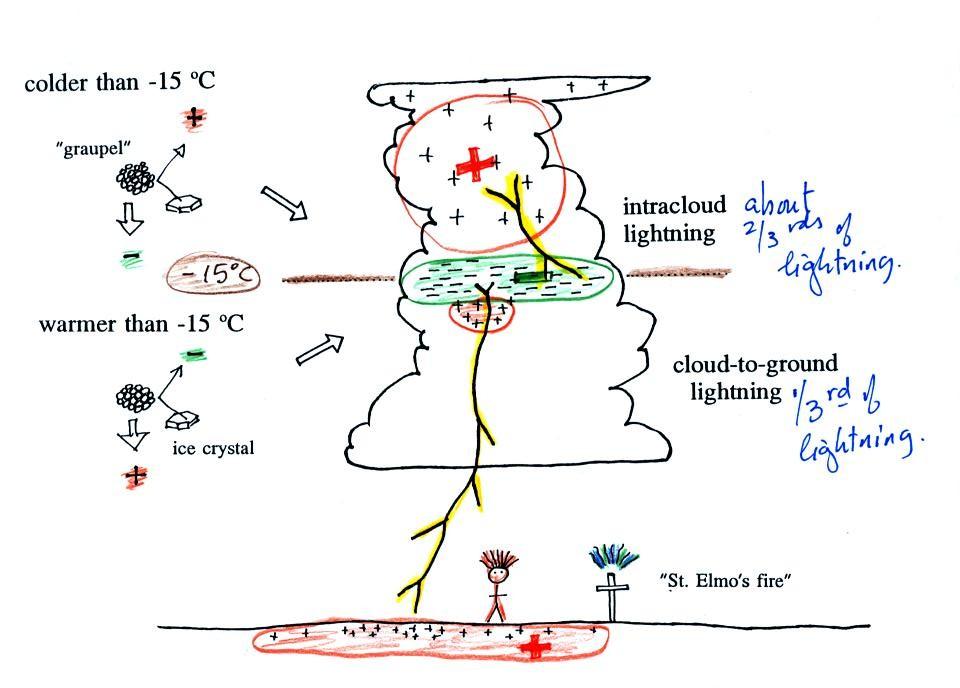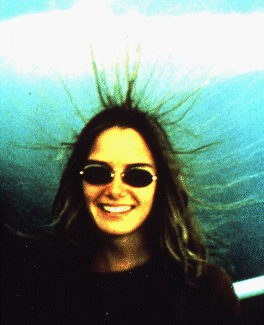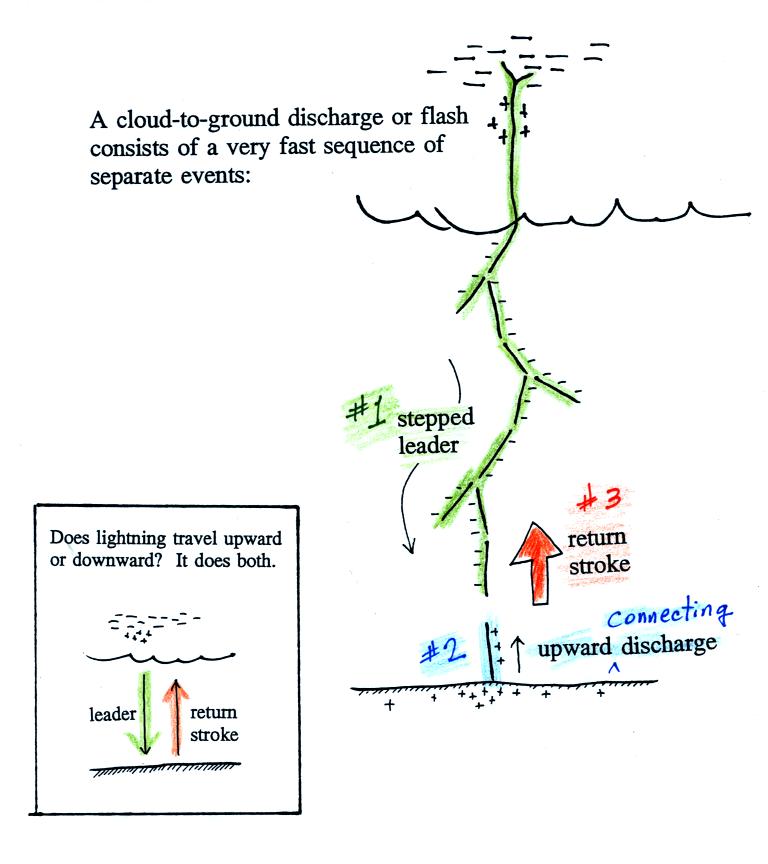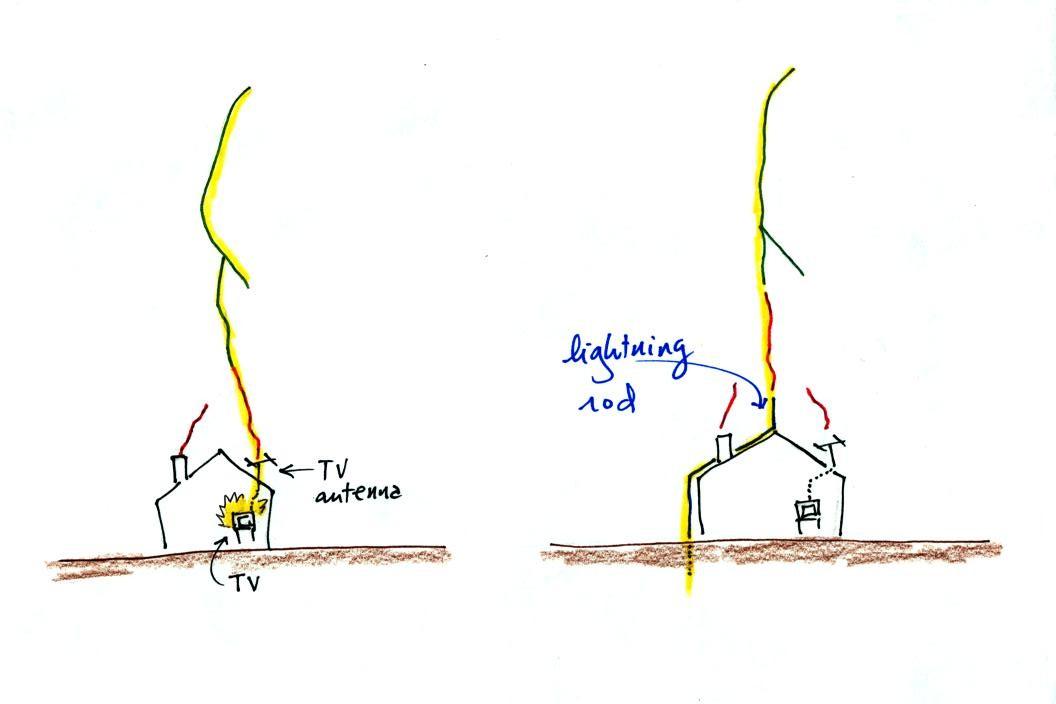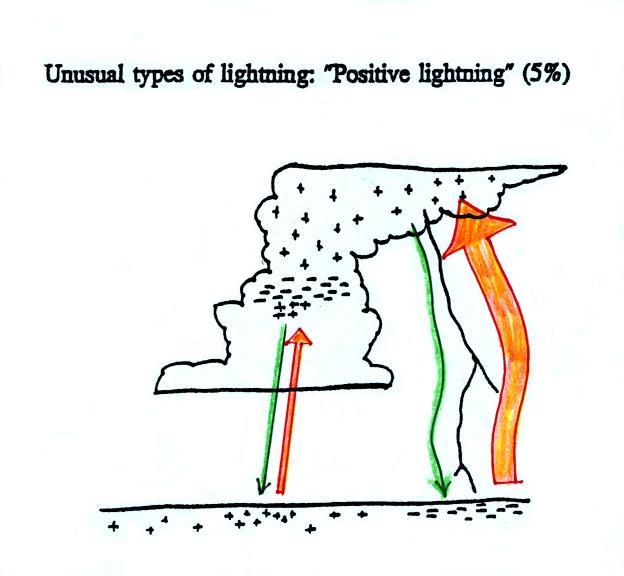As the leader channel approaches
the ground strong electrical attraction develops between negative
charge in the leader channel and positive charge on the surface of the
ground. Several positively charged sparks develop and move
upward toward the stepped leader. One of these will intercept the
stepped leader and close the connection between negative charge in the
cloud and positive charge on the ground.

Many cloud-to-ground flashes end at
this point. In
about 50% of cloud to ground discharges,
the stepped leader-upward
discharge-return stroke sequence repeats itself (multiple times) with a
few subtle
differences.
A downward dart leader travels from
the cloud to the
ground. The dart leader doesn't step but travels smoothly and follows
the channel created by the stepped leader (avoiding the
branches). It is followed by a slightly less powerful subsequent
return stroke that travels back up the channel to the cloud. This
second stroke might be followed by a third, a fourth, and so on.

A normal still photograph would
capture the
separate
return strokes
superimposed on each other. If you bumped or moved the camera
during the photograph the separate return strokes would be spread out
on the image.

The image above shows a multiple stroke flash consisting of
4
separate
return strokes (note the first stroke on the left is the only stroke
with branches). There is enough time between separate return
strokes (around 1/10 th
second) that your eye can
separate the individual flashes of light. When
lightning appears
to flicker you are seeing the separate return strokes in a multiple
stroke flash. The whole flash usually lasts 0.5 to 1 second.
Here's a stepped
leader - upward connecting discharge - return
stroke
animation.
And
a
slow
motion video
of
an actual
stepped leader
Here are
some unusual types of lightning.
Occasionally a lightning
stroke will travel from the
positive charge
region in the top of the thunderstorm cloud to ground. These
types of strikes are more common at the ends of storms and in winter
storms. This is probably because the top part of the cloud gets
pushed sideways away from the middle and bottom portions of the
cloud. Positive strokes are very powerful. They sometimes
produce an unusually loud and long lasting clap of thunder.
Here's an even rarer form of
lightning. Lightning
sometimes starts at the ground and travels
upward.
Upward lightning is generally only initiated by mountains and tall
objects such as a skyscraper or a tower of some kind. Note the
discharge is different in another way also. These
discharges are initiated by an upward leader. This is followed by
not by a return stroke but by a more normal downward leader. Once
the 2nd leader reaches the ground, an upward return stroke travels back
up the channel to the cloud.
Here's a slow
motion
video
showing
upward
lightning.
The fact that lightning could begin
with an upward discharge that
begins at the ground lead (French) scientists to develop a technique to
trigger
lightning by firing a small
rocket up
toward a thunderstorm. The rocket is connected by a thin wire to
the ground. When the rocket gets 50 to 100 m above the ground
upward lightning will develop off of the top of the wire. Scientists
are
able
to
take closeup photographs and make
measurements
of lightning currents using triggered lightning. Triggered
lightning can also be used to test the operation of lightning
protection devices. Here are a few short videos
of rocket triggered lightning from experiments conducted by the University of Florida
Lightning Research Group.
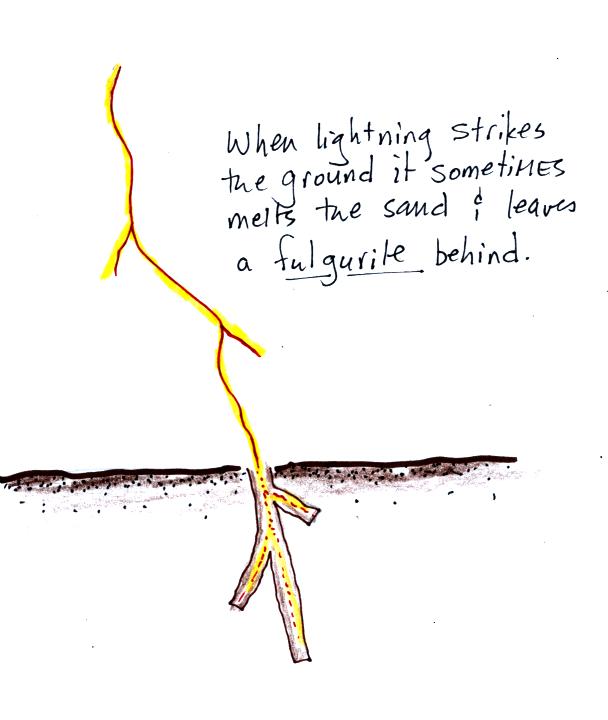
When
lightning strikes the
ground
it will often melt the soil
(especially sandy soil) and leave behind a rootlike structure called a
fulgurite. A
fulgurite is just a narrow (1/2 to 1 inch across) segment of melted
sand (glass).
And finally some lightning safety information. Lightning is
a serious weather hazard and kills just under
100
people every year in the United States.
Stay
away
from
tall
isolated
objects
during
a
lightning
storm.
You
can
be
hurt
or
killed
just by being close to a lightning strike
even if you're
not struck directly.
An
automobile
with
a
metal
roof
and
body
provides
good
protection
from
lightning.
The lightning current will travel through the metal
and around the passengers inside. The rubber tires really don't
play any role at all. The people in Florida that were
triggering lightning with rockets (shown on a video last week) were
inside a metal trailer and were perfectly
safe. All of the connections made to equipment outside the
trailer were done using fiber optics, there were no metal wires
entering
or leaving the trailer.
You shouldn't use a corded phone or electrical
appliances
during a lightning storm because lightning currents can follow wires
into your home. Cordless phones and cell phones are safe.
It is also a good idea to stay away from plumbing as much as possible
(don't take a shower during a lightning storm, for example). Vent
pipes that are connected to the plumbing go up to the roof of the
house which puts them in a perfect location to be struck.
To
estimate the distance to a lightning strike
count the
number of
seconds between the flash of light and when you first hear the
thunder. Divide this by 5 to get the distance in miles.
For example, a delay of 15 seconds between the flash of light and
the sound of thunder would mean the discharge was 3 miles away.
Research studies have shown that about 95% of cloud to ground
discharges strike the ground within 5 miles of a point directly below
the center of the storm. That's a 10 mile diameter circle and
covers the area of a medium size city.
The latest lightning safety recommendation is
the
30/30 Rule.
The 30/30 rule
People should seek shelter if the delay between
a lightning flash and its
thunder is 30 seconds or less.
People should remain under cover until
30 minutes after the final clap
of thunder.


